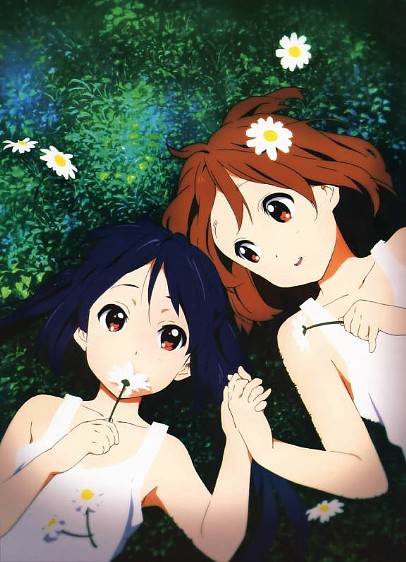
A few days ago I came across an interesting post discussing manga-ka Ken Akamatsu’s claim that the moe/harem fad is dying…
According to the post on AnimeNation, written by well known anime expert John, Akamatsu’s claim is that “the moe/harem boom is finished” and that “there are few contemporary harem anime – few anime starring male characters with an active attraction to the opposite sex for viewers to empathize with.” To sum up John’s response to this claim, he believes that the moe fad isn’t exactly “dying,” it’s just changing. I’ll expand on the points he makes in this post with my own commentary.
When first confronted with the idea that the moe craze is dying, it may seem hard to believe what with all the many moe and harem shows that have come out this year – Amagami SS, Mayoi Neko Overrun!, and Shukufuku no Campanella just to name a few. There’s no doubt that it hasn’t died yet, but according to John, the harem genre is “not as high profile as it once was.” Rather, the prominence of series such as Baka to Test to Shoukanjuu, Ookami-san to Shichinin no Nakama-tachi, and Ladies vs Butlers! are perhaps revealing a shift from providing their audience with blatant wish fulfilling male protagonists in obvious harems to, according to John, a return to “80’s style romantic comedy.”
On the less harem and more moe side of things, he makes an interesting observation about K-ON!. With all its current popularity among male otaku, the K-ON! girls are not represented in a sexual way…in fact, I’ve noticed that Kyoto Animation doesn’t put out any promotional art depicting them in obviously fan service/ecchi ways.
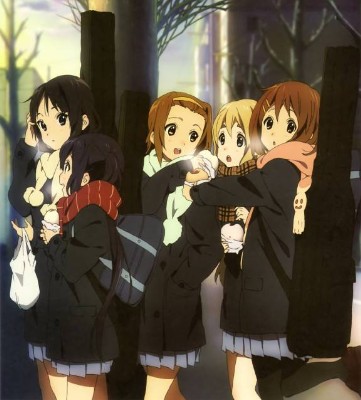
Moe but not sexual?
John states that Akamatsu apparently uses K-ON! as an example to show that the trend is leaning towards otaku having more respect for female characters and not necessarily having to see them as sexual objects. John cites a few more examples of anime like this, such as Angel Beats!, Sora no Woto, and Seitokai Yakuindomo that “attract male viewers but don’t engender sexual attraction.”
This of course brings up the debate of what exactly defines moe – sexual attraction or simple adoration and a yearning to protect? As I’ve mentioned in a previous post, my take on moe is that it’s a feeling rather than an actual genre – a feeling to protect, support, or be intimate with a character. Thus, the type of character than can be considered moe varies depending on the person. The term is associated with the stereotypical moe girls because they’re usually what male otaku would feel “moe” for.
But I digress. One of the most interesting things John points out in the post is comparing the moe anime of this year to what moe shows were like in previous years, anime like Lucky Star and Rozen Maiden in particular. According to John, the moe attitude of 2005-2009 was more possessive, with the whole “Konata is my waifu” thing and maybe the doll-like status of the Rozen Maidens. He believes that the new moe attitude of 2010 is returning to what it was in the beginning – being intimate with and supportive of the characters rather than possessing them.

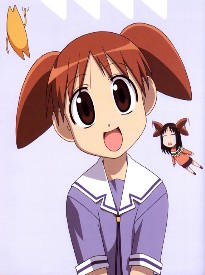
Old-school moe?
The yearning to cheer on characters like Sakura from Cardcaptor Sakura or to chill with classmates like Osaka and Chiyo from Azumanga Daioh, may slowly be returning.
He also mentions the rise of male moe for female fans, naming characters like Hideyoshi from Baka Test and even Joey from Heroman. And I would like to add Hetalia as a major player in this genre too.
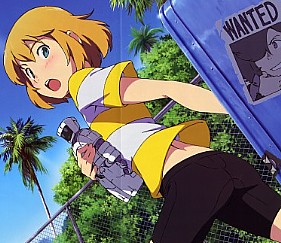
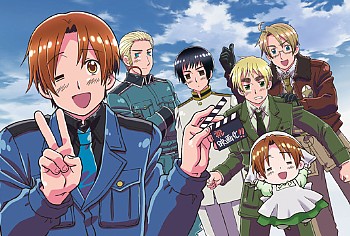
Male moe?
Additionally, he notes the decrease in so-called “lolicon” anime in recent years. Much like how harem anime is shifting to a more ’80s style romantic comedy emphasis, he says that shows like Moetan, Ichigo Marshimaro, and Kodomo no Jikan that premiered during the height of the moe boom are slowly being replaced with another 80s trend of featuring sexy older teen and adult women, namely in recent shows like Queen’s Blade, Kanokon, Ladies vs Butlers!, Sekirei, and High School of the Dead.
I think John definitely has something there as far as his theory about Ken Akamatsu’s claim, though I’m not sure exactly how much I agree with it. The harem trend could indeed be shifting to the lighter romantic comedy style rather than the wish-fulfilling arousal style. But we’re still seeing very blatant harem anime amongst the more revolutionary ones, though, like John stated, they seem to be losing their edge. Despite all the harem titles, it seems like the Key series remain the most popular, but I don’t think the genre will produce long-time favorite classics like Tenchi Muyo! and Love Hina again.
As for moe, I definitely see the shift that John is talking about with anime like K-ON!, Seitokai no Ichizon, and Angel Beats! – most of our adoration comes from wanting to cheer on and support Yui and Kanade or hang out with the Hekiyou Gakuen student council. But I still see the possessive “my waifu” attitude prevelent, for example, with characters like Hitagi from Bakemonogatari or even some fans’ attitude towards the K-ON! girls, Mio in particular.
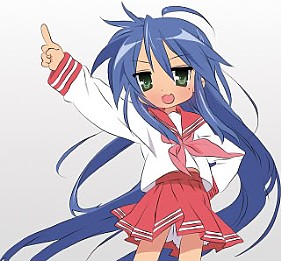

Popular waifus
Since moe is something dependent on a person’s feelings, it’s hard to point out a trend. And, while I definitely believe male moe is on the rise (perhaps indicating a rise in female fans), it’s hard to say that “lolicon” is disappearing with shows like Hanamaru Kindergarten or the many loli-like characters in other new anime.
In conclusion, I think John has many valid points, but I feel it’s hard to fully agree or disagree with him as of now. It does seem like moe/harem anime is changing, whether it’s exactly as he believes it is or not. Like many other aspects of anime fandom, this is something that will be quite interesting to observe as time goes on.
Moe’s just integrated itself completely into the medium. There’s no way it’ll “die”, it’ll just give birth to new forms and spin-off trends. And yeah, Moe’s actually been around forever in anime. It’s just not necessarily been as prominent or and labeled as such.
Personally I just hope it isn’t used as a cheap excuse to stop trying altogether, and cheapen anime even further. As much fun as people have with shows like Angel Beats and K-On, they’re not exactly stellar (I think K-On be BETTER if they didn’t over-saturate the moe, but I’m one of those weird minorities).
Besides, it’s just way too easy to sell a moe show, or make an otherwise mediocre offering popular by tossing in moe elements. It’s FAR too lucrative to disappear just like that (not until it’s been thoroughly milked for all it’s worth).
@ Hogart
Yeah, “integrated” is a good word. Nowadays you can now find moe characters in all genres of shows, and not just the typical sitcoms like Azumanga Daioh and K-ON! that are known to have them. This can be good in the fact that it makes the shows more appealing to otaku who are looking for certain moe archetypes, but it can also be bad by driving away potential fans who are anti-moe. I know there are some who wouldn’t check out Sora no Woto even though they like military/fantasy anime, or Higurashi even though they like horror, just because of how moe the characters look.
I personally like most moe-looking character designs, or at least don’t mind them. I pay more attention to the other elements of the story and characters while trying not to be bothered by obvious moe-pandering in otherwise “regular” anime series. If the moe elements do go overboard, especially with fan service and ecchi, I may get turned off, but I’m usually pretty tolerant.
I highly doubt that moe and harem animes are dying. Perhaps, the attention to the moe factor have shifted since the beginning of this year and focusing more on plot (like Sora no Woto for example).
As for harem anime… As long there are visual novel adaptations, they aren’t going anywhere. Perhaps less ecchi and/or fan service, but it’s not dying. It seems the haters of harem and moe anime wants it dead, but yeah… Haters gonna hate.
@ Chikorita157
Visual novel, or even light novel, anime adaptations seem to contain more moe than manga adaptations, but that could be because the former are usually targeted toward the niche anime audience rather than the mainstream like many manga are.
But anyway, yes I don’t believe it’s dying, just changing/integrating/shifting or other similar word. Sora no Woto is a great example because the characters look very moe, but that aspect is not played up – they could have had a less K-ON!-ish design without anything seeming out of place since the series is focused on the story.
Lastly, I would assume there isn’t much moe hate among Japanese otaku and that most of it comes from Western fans, since it’s something so different than anything we have and it goes against many Western fans’ ideal that all anime should try to be artistically and intellectually stimulating.
(Reading your post is a nice break from the desert sun and the gaudy decor of the Las Vegas Strip. =] )
Re: otaku possessiveness of moe characters: I think it’s still around, no? I recall reading on an article on Sankaku Complex about a Japanese otaku who destroyed his entire Kannagi collection once the manga subtly hinted that the goddess once had a boyfriend. Also, in some ways the official studio don’t need to produce sexually suggestive artwork or images, because the doujinshi circles will start creating tons of — often better quality! — ero-themed artwork very quickly. And then there are the body pillow covers featuring moe anime girls…
I do agree with the earlier commenters’ points about moe becoming integrated into different types of anime. Ookami-san is a great recent example — a few of the characters are definitely moe, but they’re part of an ensemble cast of different archetypes. On the other hand, a series like K-ON! is sort of like an extended window display or “shop demonstration” of moe-ness: K-ON! = M-OE! But it works precisely because it’s so self-aware of playing up the moe-ness of all the girls, especially with someone like Mio (Moe Moe Kyun!, etc.). Fans who complain about K-ON!’s excessive moe-ness don’t seem to realize that the series is, in a way, an experiment in exploring different aspects and situations of moe-ness, which is what makes it fun. =)
@ f0calizer
Yeah, possessiveness of having a “pure” girl can be attributed to any character that a fan is moe for, not just the more obvious ones like Konata and Nagi. Heck, they can’t even stand it when certain seiyuu or idols aren’t pure (i.e. the recent Aya Hirano incident). This is why I can’t fully agree with John’s suggestion that the trend is dying since there will always be certain characters who invoke that kind of an attitude in fans.
And great call on the doujinshi thing – I didn’t even think of that. It’s interesting how the canon material and official art doesn’t have to depict the characters as sexual while doujinshi definitely does – and despite this, fans are obsessed with the characters being “pure?” ~_^
You reminded me that I wrote an examination of K-ON! a while back =) But yeah, I agree with your thoughts about it too.
Have an awesome time at Anime Vegas~
For fans who follow these types of characters for every new season of programming, the difference may be noticeable. But for those such as myself, who only give these titles a cursory glance, or for those who are conscious of moe but only watch a little bit of animation… it makes no difference. I haven’t watched very many anime one might classify as moe; so the boat I’m in feels so far from the sea change, I sort of just shrug my shoulders at it.
That all said, every genre or subgenre goes through changes like this. Whether it’s about giant robots, super-violent spellcasters, magical girls, or boy-against-the-world adventures… they all go through changes similar to this. It’ll never disappear entirely, just water down and dissolve a little (and after years have passed, we can complain like cranky old folks about “the good ‘ol days” of our favorite genres, and about how pure they were).
Last week, I read a few notes from one gal in Japan who watches some animation, but not much. As a layperson, to her, “moe” was understood (and marketed as) pretty much as “any type of overly attractive, young girl.” I suppose I only mention this because it has a lot to deal with how moe is defined. (And given this perspective, the evolution of moe will be viewed quite differently.) Just some food for thought… to some people, moe isn’t even on their radar; and if it is on their radar, it’s shape/form is a whole lot different than what others might think.
@ Aaron
Heh, you’re not missing out on anything by not following the changes in anime moe. It’s only something for (nerdy) hardcore fans XD
But you’re right, it’s not uncommon for genres to go through changes and for us to look back on them with nostalgia some years in the future. LOL, I wonder what I’ll think of all this stuff I’ve written about anime when I’m a senior citizen.
I linked my definition of moe post in this post. Moe is definitely marketed as “attractive young girls,” but that’s only because those are the types of characters that appeal to male otaku who make up a large percentage of anime fans in Japan. But from what I understand, the actual definition of moe is just a feel of wanting to protect and support which, depending on the person, could be attributed to any kind of character.
I agree that moe isn’t dying, but rather changing as everything does. If anything, I think as the “slice of life” shows change to be the shows similar to romantic comedies, we’ll see less a focus on image and more of the character themselves. With K-On! you have both taking place like you said. The people who focus on the image gravitate towards Mio whereas the ones who prefer character over image go towards Azusa or Yui.
I’d say that the industry prefers the interesting characters, but can promote the “moe” aspect as well. Haruhi’s typically portrayed as a “exciting girl to be around” in promotional images whereas the new Yuki images focus on her “moe” appeal.
But shows do tend to change over time. It makes it refreshing to see a show pull off the “cliche” well when it hasn’t been seen in a while. Last year’s Kamen Rider (can I really phrase it like that when the next one begins airing tomorrow?) didn’t do many things new, but the focus on characterization was reminiscent of the shows back in the Showa period, which appealed to a lot of fans.
I think it’ll be something that we’ll notice in the background of shows, but it’ll be overshadowed by other aspects.
@ ultimatemegax
That’s interesting that you make the distinction between image and character. All the characters in K-ON! seem to have obvious moe traits, from Mio’s “moe moe kyun” to Azusa’s “Azunyan~” and Yui’s plain ‘ol air-headedness. Do you mean that Yui and Azusa more often play the role of the character we want to support, while Mio just has the more notable moe elements? (plus she’s the star in all the K-ON! ending videos)
Looking at anime promo art and official products alone, I’ve noticed an increase in companies cranking up the moe-ness of characters, even if the characters and shows don’t even seem moe, for example, lots of promo art for Phantom~Requiem for the Phantom was rather ecchi even though the anime itself wasn’t. I suppose it’s an extra way they can sell their product – if the anime itself doesn’t depict the characters in a moe or ecchi way, promo art, being outside the canon, can and thus bring in more potential fans who like that kind of moe.
probably because many things to a certain point of evolution…
anyway, It’s just became too non-sexual [a (unknown) positive transformation] so it means that it’s targeting to a broader range of audience.
Probably It’s because that they are also mixed what they called a ‘slice-of-life’ element.
@ ~xxx
You’re right, making the characters non-sexual does attract a broader audience. K-ON! would be a good example of this – because the “sexiness” of the girls isn’t emphasized while their “cuteness” is, that could bring in female fans as well as males, since female fans often like cuteness. Lack of sexual scenes could also make the show more suitable for younger viewers as well. Despite its target audience, K-ON! is G-rated most of the time.
I’d say the reason that the majority of the 90s and early 2000s harem anime is disappearing is the result of two things: horribly bland and obvious characterization and pathetic writing.
In characterization the problem is again two-fold. The first are the female characters that make up the ‘harem’ (we are focusing only on females for this due to my lack of wide spread exposure to shoujo harems). You will have the girl next door type who may or may not be a childhood friend, you will have the tsundere type who might also be a childhood friend or who will be highly ranked at school, you will have the loli type who will either be innocent or secretly 700 years old and you will have the soft spoken and cute type. On the male side you will have an everyman character with poor grades, little ability in sports, horrible luck often a secret power that somehow trumps all others and no ability to actually take a stand for himself. This is supposed to be so that the viewer can identify with him but it results in a rather boring and dull protagonist that we can’t like and don’t really care about. Indeed, we never really see a reason for why the girls would like this character. Simply because he is a nice person isn’t enough.
The second problem of the writing is that more and more writers rely on the premise of ‘unlucky guy gets surrounded by hot girls’ to sell a story and they don’t put as much effort into a plot that viewers actually like and worse, when they actually do have an interesting plot they don’t really use it for anything other than background. I seriously doubt we’d find anything like Ranma in this day and age.
To illustrate my point think of the series Ranma 1/2. One of the problems with it was that was that the relationships rarely went anywhere but they did use the problem of turning into a girl, humor and martial arts to make in enjoyable. Now compare it to the more recent Maburaho where, while relationships did go somewhere (sort of), the idea of a magical world where people are judged on basis of magical power never is really used. We don’t see discrimination or even any way that magic actually changes things. Combined with a boring main character who appears unable to have a spine for more than three seconds we are left with the humor of girls who want his genes (and yet apparently can’t figure out that this is a BAD way to pursue a boy).
its true….loli and harem seems to be dying here. i live in Japan and just got back from a doushinji convention…there was hardly any loli stuff…i was very surprised, because it really set this in stone. Most of the woman were older and sexy…hardly any high school girl stuff even…office woman stuff! it was odd ^^ i think the lolita complex is beginning to die…
ps: sorry i forgot to mention ^^ for the harems, i think what we think of as harems is dying~but lots of anime/manga still has lots of females…but its like what your article says! ^-^